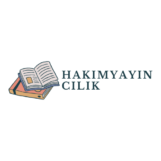Nonfiction writing can feel overwhelming at times, especially when trying to convey facts and insights clearly. I’ve found that a quick check can make all the difference in ensuring my work resonates with readers. Whether you’re crafting an article, a memoir, or an academic paper, honing your approach is key to effective communication.
In this article, I’ll share a streamlined method for evaluating your nonfiction writing. This quick check will help you identify strengths and areas for improvement, allowing you to refine your message and engage your audience. Let’s dive into the essentials that can elevate your writing and make your ideas shine.
Key Takeaways
- nonfiction writing 1 quick check focuses on clarity and factual accuracy, making effective communication essential for engaging readers.
- Understanding your target audience helps tailor language and tone, enhancing relatability and audience connection.
- A clear structure, including compelling openings and logical flow, is crucial for guiding readers through nonfiction narratives.
- Thorough research and fact-checking are vital to maintaining credibility and preventing misinformation in your writing.
- Engaging narratives, supported by anecdotes and vivid language, captivate readers while delivering factual content.
- Using a quick check method allows writers to identify strengths and weaknesses, leading to improved clarity, engagement, and overall effectiveness.
Nonfiction Writing 1 Quick Check
Nonfiction writing encompasses a variety of genres, including essays, biographies, and journalistic articles. Each genre revolves around factual content, aiming to inform, educate, or persuade readers. Clarity and accuracy remain critical components in nonfiction, as they ensure effective communication of ideas and information.
Nonfiction writers must employ cohesive structures and logical flow. Clear transitions guide the reader through the narrative, enhancing understanding. Strong openings and concise summaries engage the audience, compelling them to continue reading.
Research and fact-checking are paramount in this genre. Writers must verify sources and present information reliably to maintain credibility. Proper citation practices reinforce this reliability, allowing readers to trace original sources.
Understanding the target audience shapes the writing process. Writers tailor their language, tone, and complexity based on audience preferences. This approach enhances relatability and increases the likelihood of audience engagement.
Nonfiction writing demands critical thinking. Writers analyze information, draw connections, and present it uniquely. This analytical process enriches the writing, offering fresh perspectives on familiar topics.
Key Features of Nonfiction Writing 1 Quick Check
Nonfiction writing prioritizes clarity and factual accuracy. This section highlights essential features, aiding in effective evaluation through quick checks.
Structure and Format
Effective nonfiction writing employs a clear structure and format. It typically includes an introduction that captivates the reader and outlines main points. Body sections expand on these points with supporting evidence and examples. Clear headings and subheadings guide readers, providing easy navigation through the content. Consistent formatting and visual elements, like bullet points or numbered lists, enhance readability, making complex information more digestible.
Target Audience
Knowing the target audience is crucial for successful nonfiction writing. Writers should tailor language and tone to match readers’ preferences and expectations. Different audiences require different approaches; for instance, scholarly articles demand formal language while magazine pieces may allow for a more conversational style. Incorporating relevant examples and relatable concepts connects the content with the audience, fostering engagement and ensuring the material resonates effectively.
Techniques for Effective Nonfiction Writing
Effective nonfiction writing requires precise techniques that enhance clarity, engagement, and credibility. The following techniques focus on essential aspects that contribute significantly to successful nonfiction.
Research and Fact-Checking
Thorough research forms the backbone of credible nonfiction. I gather information from reputable sources, ensuring accuracy and reliability. Utilize databases, academic journals, and established websites to support claims. Regular fact-checking prevents the spread of misinformation and enhances trust. Implement proper citation practices, which acknowledge sources and give credit where it’s due.
Crafting Engaging Narratives
Engaging narratives in nonfiction captivate readers while delivering factual content. I begin with compelling openings that pique interest, setting the tone for the piece. Use anecdotes, case studies, or personal experiences to illustrate points and create relatability. Structure the narrative logically, guiding readers through ideas with smooth transitions. Incorporate vivid language to paint pictures and evoke emotions, maintaining reader engagement throughout the text.
Benefits of Using Nonfiction Writing 1 Quick Check
Nonfiction writing 1 quick check offers several advantages for writers seeking to improve their craft.
- Enhanced Clarity: It pinpoints areas where clarity may falter, helping me communicate my message more effectively.
- Improved Structure: This method emphasizes strong organization, enabling me to create a logical flow that guides readers through the content smoothly.
- Targeted Feedback: It provides focused feedback, allowing me to address specific weaknesses and refine my writing strategies accordingly.
- Increased Engagement: By evaluating elements that draw in readers, I can enhance my narrative, making the material more captivating.
- Credibility Assurance: Incorporating fact-checking encourages me to prioritize accurate information, which boosts my authority as a writer.
- Audience Awareness: This quick check reminds me to consider my audience, helping me choose the appropriate tone and language for different readerships.
Engaging with this streamlined assessment tool strengthens my nonfiction writing skills and fosters a more impactful connection with my audience.
Nonfiction Writing
Mastering nonfiction writing 1 quick check is a journey that requires constant reflection and improvement. By utilizing the quick check method I shared, I can sharpen my skills and enhance the clarity of my messages. This tool not only helps identify strengths but also highlights areas needing attention.
With a focus on structure and audience engagement, my writing can become more impactful. I’ve learned that thorough research and a clear understanding of my readers are vital for credibility and relatability. As I continue to refine my approach, I’m excited to see how these techniques will elevate my nonfiction work and resonate with my audience.

